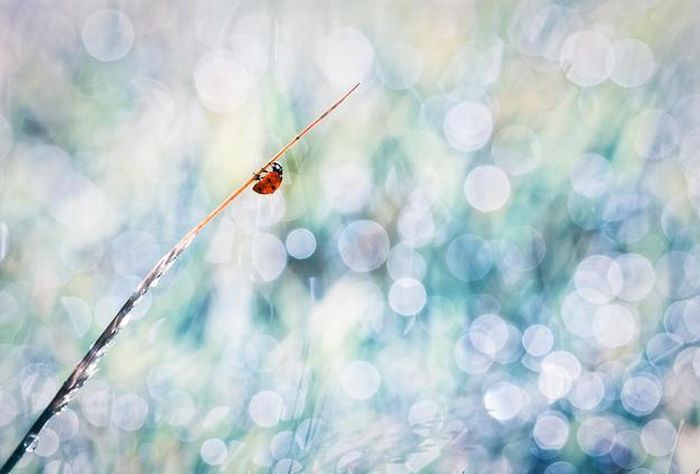|
|
Insect Macro Photography
|
Communication using surface-borne vibrational signals is more widespread among insects because of size constraints in producing air-borne sounds. Insects cannot effectively produce low-frequency sounds, and high-frequency sounds tend to disperse more in a dense environment (such as foliage), so insects living in such environments communicate primarily using substrate-borne vibrations. The mechanisms of production of vibrational signals are just as diverse as those for producing sound in insects.
Some species use vibrations for communicating within members of the same species, such as to attract mates as in the songs of the shield bug Nezara viridula. Vibrations can also be used to communicate between entirely different species; lycaenid (gossamer-winged butterfly) caterpillars which are myrmecophilous (living in a mutualistic association with ants) communicate with ants in this way. The Madagascar hissing cockroach has the ability to press air through its spiracles to make a hissing noise as a sign of aggression; the Death's-head Hawkmoth makes a squeaking noise by forcing air out of their pharynx when agitated, which may also reduce aggressive worker honey bee behavior when the two are in close proximity.
• Chemical communication
In addition to the use of sound for communication, a wide range of insects have evolved chemical means for communication. These chemicals, termed semiochemicals, are often derived from plant metabolites include those meant to attract, repel and provide other kinds of information. Pheromones, a type of semiochemical, are used for attracting mates of the opposite sex, for aggregating conspecific individuals of both sexes, for deterring other individuals from approaching, to mark a trail, and to trigger aggression in nearby individuals. Allomonea benefit their producer by the effect they have upon the receiver. Kairomones benefit their receiver instead of their producer. Synomones benefit the producer and the receiver. While some chemicals are targeted at individuals of the same species, others are used for communication across species. The use of scents is especially well known to have developed in social insects.
|
|









